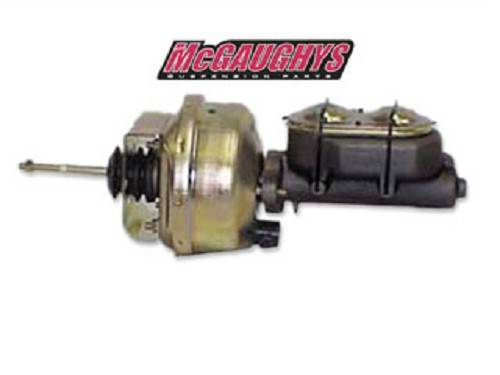
Greening Testing Laboratories is a fully certified brake testing lab that provides a variety of brake testing services worldwide. If the power steering is failing, the boosters eventually will as well. Failed power steering is a symptom of hydraulic boosters.Overheated hydro-booster can be a result of unusually hot temperatures outside the car, which can damage the seal and spool vane of your hydraulic brake booster.The air gets into the fuel mix, which reduces the cooling action, increases friction and temperature in the engine and can lead to pre-ignition. Compromised engine function can occur with a vacuum leak when there is a hole in the diaphragm or the check valve that brings air into the system.

Electronic brake boosters housed with the master cylinder may also develop leaks that affect their performance.
Fluid leakage is typical for hydraulic booster failure. Warning lights, such as the ABS, or anti-lock braking system, will activate if you have an electronic brake booster system failure. Increased braking distance is a clear sign of bad or failing brake boosters. High brake pedal position can happen when there is an imbalance of pressure in the vacuum chamber, causing the pedal to sit higher than normal and return more slowly to its original position after you let it go. Stiff brake pedal action is a strong indicator of brake booster failure because the booster will have lost its ability to amplify the force of your foot to the brake, requiring you to use more pressure. Regular maintenance doesn't cover everything, so be on the lookout for the common symptoms of a faulty brake booster: Symptoms of a faulty brake boosterįeeling confident on the road means not only keeping up with regular maintenance but also knowing the signs for when you should bring your car into the shop for service. Instead of generating power from the vacuum pressure, it relies on energy from the power steering pump. The hydraulic brake booster uses direct hydraulic pressure. It uses the gas-powered engine's vacuum to increase the pressure used on the brake pedal. A vacuum pump is typically used in high-altitude locations where vehicles can't produce enough vacuum for the brake booster.Ī vacuum brake booster is the most common type of brake booster. Vacuum pumps will replace the engine intake manifold for cars that don't use air to cool the engine or use another method outside of an intake, such as turbo-charged vehicles, electric vehicles, hybrid vehicles and diesel cars. Knowing the differences will help increase your awareness if there happens to be an issue with them. There are several varieties of brake boosters that accompany certain types of vehicles. Without a brake booster, you would have to push a lot harder on the brakes to apply the same amount of pressure to the brake cylinder. They are used most commonly with cars that use hydraulic brakes rather than pressurized air system brake circuits. #Power booster master cylinder manual
The booster is what separates a car with a power steering system and one with manual steering.

Essentially, if Fred had used a brake booster, it would have significantly increased his ability to stop more quickly. When you press the pedal, the brake booster uses engine vacuum and pressure to support the brake pedal with increased force on the master brake cylinder. When you're driving and you come to a stop sign, you will apply pressure to the brake pedal which will then slow your car down. Ask your mechanic to check your brake boosters next time you pay a visit to the shop.






 0 kommentar(er)
0 kommentar(er)
